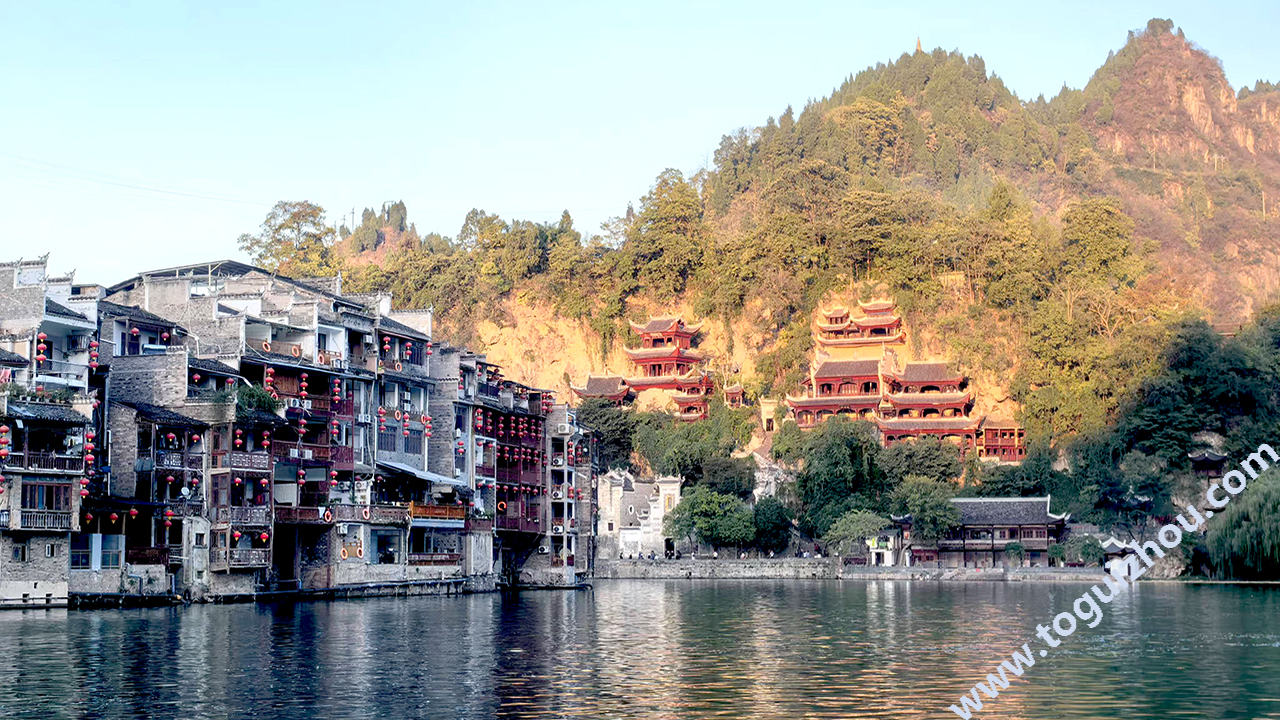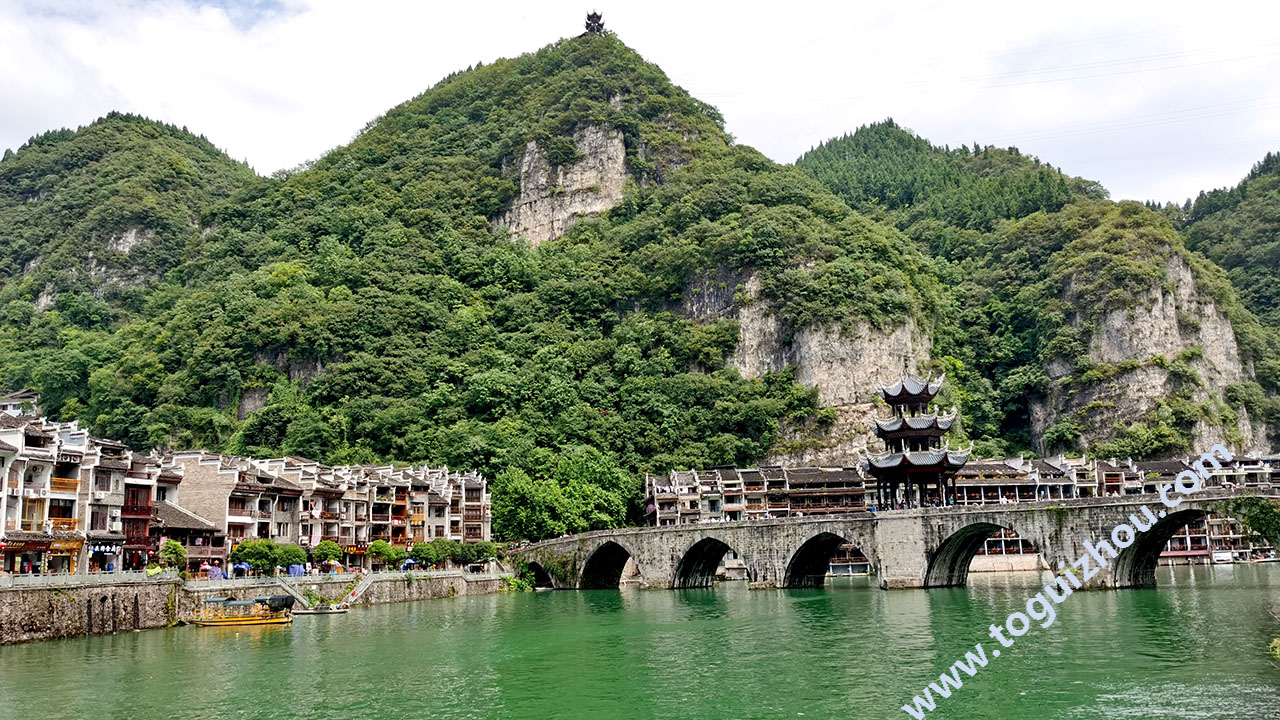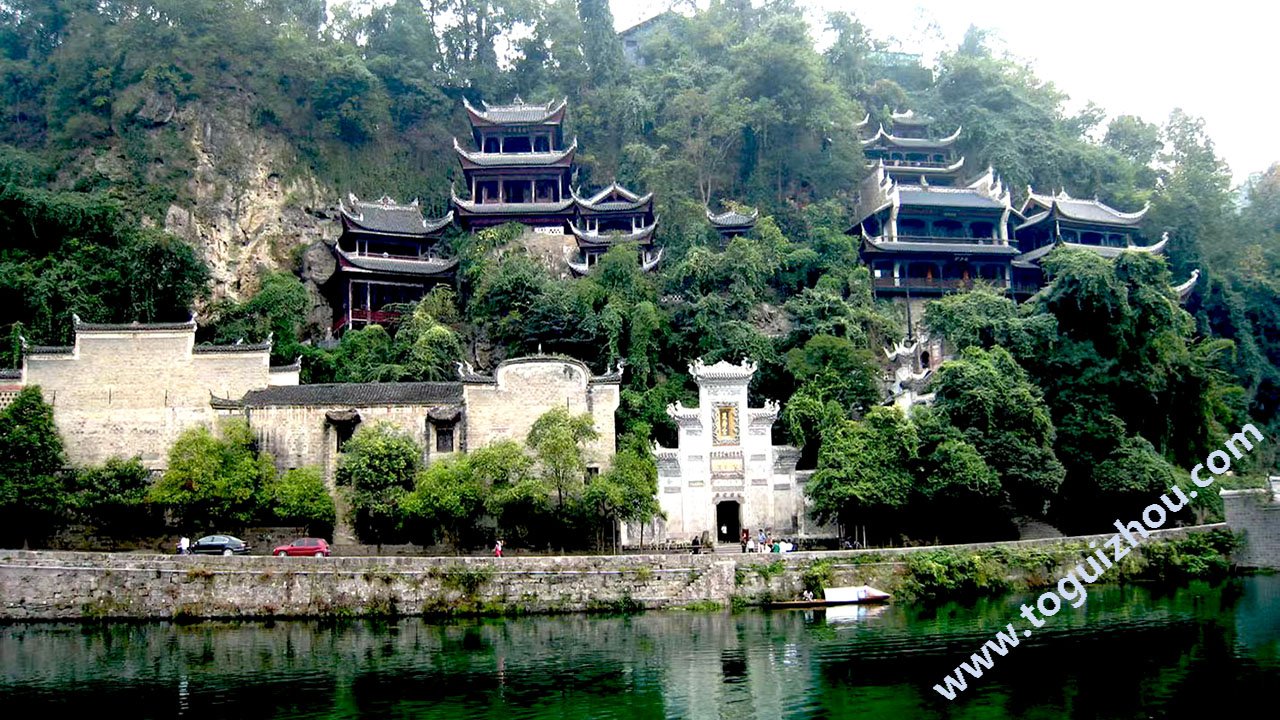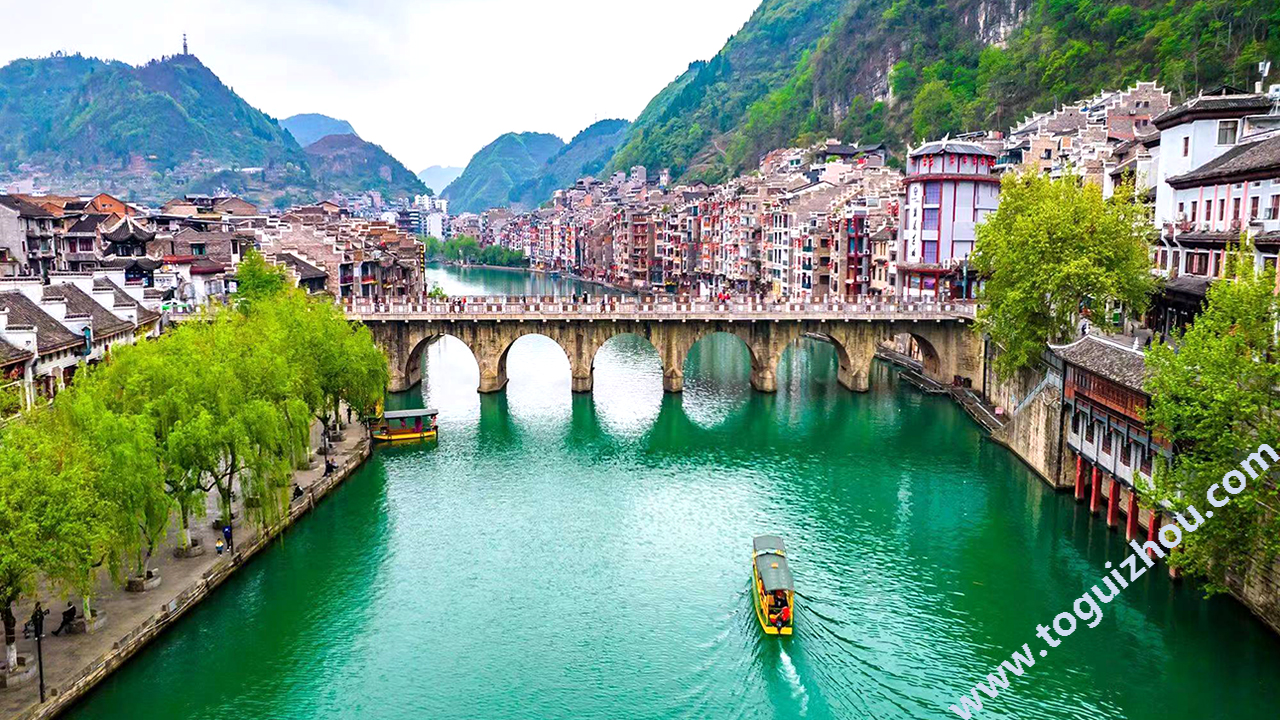Zhenyuan Ancient Town is a place that combines rich history, unique culture, and breathtaking natural scenery. It is located by the Wuyang River in Zhenyuan County, Qiandongnan Miao and Dong Autonomous Prefecture, Guizhou Province.
1. Historical Background
With a history of over 2,280 years, dating back to 277 BC when it was established as a county during the reign of King Zhaoxiang of the Qin Dynasty. For more than 700 years during the Yuan and Qing dynasties, it served as the administrative center of the region. In 1258 AD (the sixth year of Baoyou in the Song Dynasty), it was named "Zhenyuan Zhou", and this name has been used ever since.
2. Geographical Features
Location and Terrain: Situated in the central part of the eastern Guizhou low - mountain and hilly area, it is mainly characterized by karst landforms. The terrain slopes from west to east, with the highest altitude reaching 1,132 meters and the lowest at 354 meters.
Hydrology: There are 106 rivers in the area, with a total length of 693 kilometers. The Wuyang River meanders through the town in an "S" shape from west to east, dividing the ancient town into two parts. The north bank is the Fucheng (Prefectural City), and the south bank is the Weicheng (Garrison City), creating a unique urban pattern resembling a Taiji diagram.
Climate: It enjoys a subtropical monsoon humid climate, featuring mild weather, abundant rainfall, distinct seasons, and a harmonious combination of water and heat. The average annual temperature is around 16.5 degrees Celsius, with neither severe cold in winter nor intense heat in summer.
3. Cultural Characteristics
Architectural Culture: Zhenyuan is a museum of Chinese mountain - cliff - adhering architecture. Its architectural styles integrate elements from Central Plains culture, Jingchu culture, Bashu culture, etc. There are numerous historical sites, including eight guild halls, four caves, eight ancestral halls, nine temples, twelve wharves, as well as the ancient city walls of the Fucheng and Weicheng, and nearly 200 other scenic spots such as Wuwang Cave, four palaces, ancient wells, and ancient opera stages.
Ethnic Culture: The town is home to more than 20 ethnic minorities, such as the Miao and Dong ethnic groups. These ethnic groups live in harmony, and their cultures blend together, creating unique folk customs. For example, the Lusheng Festival of the Miao ethnic group and the Drum Tower culture of the Dong ethnic group are important parts of the local culture.
Religious Culture: It is a place where multiple religions converge. Buddhism, Taoism, and Confucianism co - exist and integrate harmoniously. The Qinglongdong Ancient Architecture Complex is a typical example of the integration of the three religions.
4. Tourist Attractions
Qinglongdong Ancient Architecture Complex: One of the largest ancient architecture complexes in Guizhou Province, it combines Buddhist temples, Taoist palaces, and Confucian temples. Hanging on the mountainside, it is known as the "Hanging Monastery in Southwest China". The buildings are ingeniously designed and blend perfectly with the natural landscape.
Shiping Mountain: Located in the north of Zhenyuan Ancient Town, it serves as a natural barrier. On the mountain, there is an ancient city wall dating back to the Ming Dynasty, also known as the "Great Wall of Miao Border". Climbing to the top of the mountain allows visitors to overlook the entire beauty of Zhenyuan Ancient Town.
Wuyang River Scenic Area: As the mother river of Zhenyuan, the Wuyang River has clear and green water. The peaks on both sides are peculiar, presenting a beautiful scenery. The scenic area includes Longwang Gorge, Zhuge Gorge, and Xixia Gorge. Taking a boat tour along the river enables tourists to enjoy the natural and cultural landscapes.
Heping Village: It was the site of the Second Prisoner of War Camp of the Military and Political Department of the National Government during the Anti - Japanese War. It is a national key cultural relic protection unit, preserving a large number of historical relics and materials, witnessing the heroic struggle and humanitarian spirit of the Chinese people during the Anti - Japanese War.
5. Culinary Delights
Sour Soup Fish: A characteristic local dish, it uses fresh fish as the main ingredient, cooked with the locally - unique sour soup. The sour soup is rich and the fish is tender, with a sour and spicy taste that can stimulate the appetite and strengthen the spleen.
Tofu Pudding Baked Fish: The fresh fish is baked until golden, then covered with a layer of tender tofu pudding and various seasonings, and finally baked in the oven. The fish is crispy on the outside and tender on the inside, and the tofu pudding is smooth, creating a delicious taste.
Zhenyuan Red Sour Sauce: A fermented sauce made from tomatoes, peppers, and other ingredients. It has a sour and spicy taste and can be used for stir - frying, making soups, or seasoning noodles. It is an essential condiment on the dining tables of Zhenyuan people.






